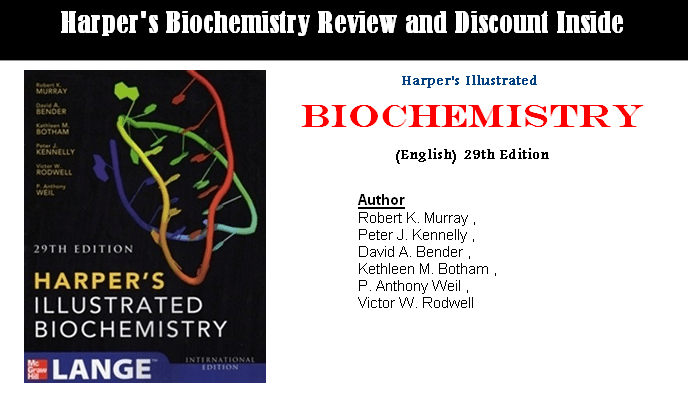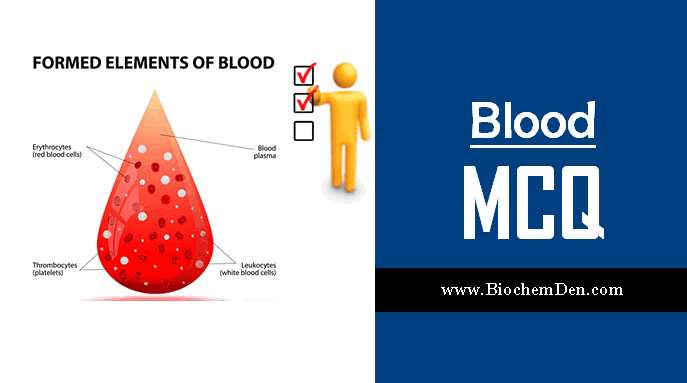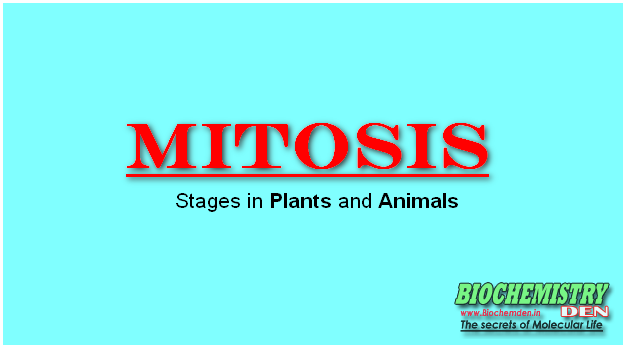Biochemistry involves the study of the chemical processes within living organisms.
Our bodies’ excellent biology fascinates us, especially after learning about their various biological processes.
Biochemical reactions occur inside cells and happen at specific places, called organelles inside cells.
Living organisms use metabolic processes to produce energy, respiratory functions to take in oxygen, digestive processes to break down nutrients into usable forms, and excretory processes to eliminate waste.
We need to understand these basic concepts to better understand how our bodies function. This article will talk about the significant subfields of biochemistry and what each one involves.
The cornerstone of classical biochemistry research focuses on the properties of proteins, many of which are enzymes. However, there are other disciplines that focus on the biological properties of carbohydrates (Glycobiology) and lipids (Lipobiology).

For historical reasons of metabolic chemistry of the cell has been intensively investigated in important current research (as the Genome Project, whose function is to identify and record all the human genetic material), they are directed toward the investigation of DNA, the RNA, the protein synthesis, the dynamics of cell membrane and energy cycles.
The branches of biochemistry are vast and diverse and have varied over time and the progress of biology, chemistry, and physics. Every day new topics are adding in the scientific data. So you should follow the current topics in Biochemistry to keep your knowledge up to date.
What is Biochemistry?
Biochemistry is the study of life processes at the molecular level. Learn about the various fields, their applications, and their significance.
Biochemistry has been defined as the scientific study of the chemistry and physiology of living organisms. This branch of science deals with the chemical reactions and interactions in living systems. From enzymes to hormones, biochemists study these molecules and their actions.
It is important to note that chemistry plays a vital role in biology, and the two domains share common conceptual frameworks and methods of investigation. Hence, understanding the basics of chemistry helps students grasp the concepts more quickly.
There are many branches of biochemistry, each with its own focus and area of study. Here is a brief overview of some of the most popular branches:
1. Cellular biochemistry
This branch focuses on the chemical processes within cells. It includes studying how cells produce energy, store and use nutrients, and how they produce and maintain their structure.
2. Molecular biochemistry
This branch looks at the structure and function of biomolecules, such as proteins, DNA, and carbohydrates. It includes understanding how these molecules carry out biochemical reactions and how they interact.
3. Metabolic biochemistry
This branch focuses on the chemical reactions in the body to maintain life. It includes studying energy production, nutrient metabolism, and detoxification.
4. Biochemical genetics
This branch investigates the role of genes in biochemical processes. It includes understanding how genes are involved in synthesizing proteins and other biomolecules and how they function.
Branches of biochemistry
What are the basic biochemistry topics to learn? Before learning about the current topics in biochemistry, you should know the particular topics and current topics in the relevant subjects. Here we are discussing the topics in biochemistry in this post, so we added a few of the selected topics for easy reference.
1. Structural biochemistry
An area of biochemistry aims to understand the chemical architecture of biological macromolecules, especially proteins and nucleic acids (DNA and RNA). It is one of the main branches of biochemistry.
And they are attempting to meet the peptide sequences, conformal structures, and physico-chemical atomic interactions that enable these structures.
One of the most significant challenges is determining the protein structure, knowing only the amino acid sequence, which would be essential for the rational design of proteins (protein engineering).
2. Bio-organic Chemistry
An area of chemistry deals with the study of organic compounds (i.e., those having carbon-carbon or carbon-hydrogen covalent bonds) that come specifically from living things.
It is a science closely related to classical biochemistry since most carbon biological compounds are involved.
While classical biochemistry uses knowledge of organic molecule structure, chemical bonding, molecular interactions, and reactivity to give an understanding of biochemical functions, bioorganic chemistry tries to integrate a sense of organic synthesis, reaction mechanisms, structural analysis, and analytical methods with primary and secondary metabolic reactions, biosynthesis, cell recognition, and chemical diversity of living organisms.
From there arises Natural Products Chemistry (Secondary metabolism).
3. Enzymology
Studies the behavior of biological catalysts or enzymes, such as certain proteins or specific catalytic RNA, and coenzymes and cofactors such as metals and vitamins.
So the mechanisms of catalysis are questioned, the interaction processes of the enzymes-substrate catalytic transition state, enzymatic activities, reaction kinetics, and means of enzymatic regulation and expression, all from a biochemical point of view.
Studies and tries to understand the essential elements of the active site and those that are not, and catalytic effects that occur in the modification of these elements; in this sense, techniques are frequently used as directed mutagenesis.
4. Metabolic Biochemistry
An area of biochemistry claims to know the different types of metabolic pathways at the cellular level and organic context. Thus, they are essential skills in enzymology and cell biology.
Study all cellular biochemical reactions that make life possible and healthy organic biochemical indices, the molecular basis of metabolic diseases, or intermediate metabolic flows globally.
From here arise academic disciplines such as bioenergetics (the study of energy flow in living organisms), Nutritional Biochemistry (the study of the processes of nutrition associated with metabolic pathways), and clinical biochemistry (the study of biochemical alterations in disease states or trauma).
Metabolism is the set of science and techniques dedicated to a complete study of the system comprising the group of molecules that are metabolic intermediates. These primary and secondary metabolites can be found in a biological system.
5. Xenobiotics
It is the discipline that studies the metabolic behavior of compounds whose chemical structure is not proper in the regular metabolism of a given organism.
When they enter the human body, they may be secondary metabolites of other organisms (e.g., mycotoxins, snake venom, and phytochemicals) or non-existent in nature or infrequent compounds.
Pharmacology is a discipline that studies benefiting xenobiotics cell function in the organism due to its therapeutic or preventive effects (drugs).
Pharmacology has clinical applications when substances are used to diagnose, prevent, treat, and relieve symptoms of a disease and aid in the rational development of less invasive and more effective therapies against specific biomolecular target substances.
On the other hand, toxicology is the study that identifies, studies, and describes the dose, nature, incidence, severity, reversibility, and generally the mechanisms of adverse effects ( toxic effects ) produced by xenobiotics.
Toxicology is currently studying the mechanism of endogenous components such as oxygen free radicals and other reactive intermediates generated by xenobiotics and antibiotics.
6. Immunology
One area of biology is interested in the organism’s reaction to other organisms, such as bacteria and viruses. All this takes into account the response and immune function of living things, and it is essential in this area of development and behavior studies of the production of antibodies.
7. Endocrinology
The study of internal secretions called hormones, which are produced by specialized cells substances whose aim is to affect the function of other cells. Endocrinology is the biosynthesis, storage, and function of hormones, cells, and tissues secreting and hormone signaling mechanisms. There are sub-disciplines such as medical endocrinology, the endocrinology plant, and animal endocrinology.
8. Neurochemistry
The study of organic molecules involved in neuronal activity. This term is frequently referred to as neurotransmitters and other molecules such as neuro-active drugs influencing neuronal function.
9. Chemotaxonomy
The study of the classification and identification of bodies according to their demonstrable differences and similarities in their chemical composition. The studied compounds can be phospholipids, proteins, peptides, glycosides, alkaloids, and terpenes.
John Griffith Vaughan was one of the pioneers of chemotaxonomy. Examples of applications can be cited chemotaxonomy differentiation family Asclepiadaceae and Apocynaceae at the discretion of the presence of latex; the presence of agarofuranos in the family Celastraceous.
10. Chemical ecology
The study of the chemical compounds of biological origin is involved in the interactions of living organisms.
It focuses on the production and response of signaling molecules (semi chemicals) and compounds that influence other organisms’ growth, survival, and reproduction (allelochemicals).
11. Virology
It is one of the areas of biology dedicated to the study of elementary biosystems: viruses. Both classification and recognition, and their operation and molecular structure. It aims to recognize performance targets for potential drugs and vaccines to prevent direct or preventive expansion.
We also analyze and predict, in evolutionary terms, the variation and combination of viral genomes, which could eventually make them more dangerous. Finally, they represent a tool with many projections as recombinant vectors and have already been used in gene therapy.
12. Molecular genetics and genetic engineering
An area of biochemistry and molecular biology studies genes, their heritage, and their expression.
Molecularity is dedicated to the study of DNA and RNA mainly. It uses powerful tools and techniques in the study, such as PCR and its variants, mass sequencers, translation, transcription-commercial kits for extracting DNA and RNA, processes in-vitro and in-vivo, restriction enzymes, and DNA ligases, and the mechanisms of basal expression and inducible gene genome.
It also studies the insertion of genes, gene silencing, and the differential expression of genes and their effect.
Thereby overcoming barriers and boundaries between species, the genome of one species can insert itself into another and generate a new species. One of their top goals is to match current regulatory mechanisms and gene expression, that is, to obtain an epigenetic code. It is an essential pillar in all life science disciplines, especially biotechnology.
13. Molecular biology
The scientific discipline aims to study the processes taking place in living organisms from a molecular standpoint.
Classical biochemical and metabolic cycles are investigated in detail and the integration and disintegration of the molecules that make up living beings. It aims to set preferably in the behavior of biological macromolecules (DNA, RNA, enzymes, hormones, etc.) within the cell and explains the natural functions of the living being by these properties at the molecular level.
14. Cell biology
(Formerly cytology, from citos = cell and logos = study or treaty). It is an area of biology dedicated to studying the morphology and physiology of prokaryotes and eukaryotes.
Try to understand their properties, structure, biochemical composition, functions, containing organelles, their interaction with the environment, and their life cycle. It is essential to understand the intrinsic cellular life processes during the cell cycle, such as nutrition, respiration, synthesis of components, defense mechanisms, cell division, and cell death.
You must also understand the mechanisms of cell communication (especially in multicellular organisms) or junctions.
It is essentially an area of observation and experimentation in cell cultures that often target the identification and separation of cell populations and the recognition of cell organelles.
Some techniques used in cellular biology are concerned with cytochemical techniques, plant cell cultures, an observation by optical and electron microscopy, immune cytochemistry, immune histo-chemistry, ELISA, or flow cytometry. It is closely linked to histology, microbiology, and physiology.
The above-given branches are related to biochemistry topics, and I think this material on selected topics in biochemistry is helpful. You can share this with your friends who are relevant to this topic.
Major Branches of Biochemistry
Let us see the significant branches of biochemistry one by one.
1. Molecular biology
Molecular biology studies the structure and function of macromolecules, which are large molecules consisting of many atoms. These molecules can be found in all living things and are responsible for the way cells work. Molecular biologists study how these macromolecules are folded and organized and how they interact with one another. They also learn how these molecules are used in the body to carry out specific functions.
2. Genetics
Genetics is the study of the genetic makeup of an organism, including its traits, abilities, and diseases. Genetics is the foundation of modern biology and has helped shape our understanding of life and disease.
3. Biochemistry of proteins
Proteins are the largest and most complex molecules in the body. A protein is composed of amino acids linked together in a chain, and the amino acids are organized into a sequence that specifies the protein’s function. Proteins are essential for many biochemical processes in the body.
Proteins are vital molecules in our bodies, and they contribute to almost every bodily function – from muscle movement, digestion, and metabolism to immunity against disease. Proteins are essential in maintaining life.
4. Biochemistry of DNA
All living species have DNA as their genetic material. It comprises a long chain of nucleotides, which are chemical building units. Each nucleotide contains a deoxyribose sugar, a phosphate group, and a nitrogenous base. The nucleotide sequence of DNA is the blueprint for the proteins that make up the cell.
5. Biochemistry of carbohydrates
Carbohydrates are a macronutrient that can be present in food. Carbohydrates exist in various forms, each with their own set of properties and health implications. Carbohydrates are molecules made up of carbon, hydrogen, and oxygen. They are the body’s primary energy source and can be obtained in various foods. The body uses carbohydrates (glucose) to produce energy, which it uses to function.
6. Biochemistry of lipids
Lipids are a broad molecule class that includes fats, waxes, and sterols. Lipids are essential for many biological processes, including energy production and storage, cell membrane function, and reproduction. Lipids are composed of two types of molecules: fatty acids and cholesterol.
Fatty acids are a type of lipid molecule composed of a carbon chain and a hydrocarbon chain. Most fatty acids are unsaturated, which means that one or more of the carbon atoms in the hydrocarbon chain is missing a hydrogen atom. Unsaturated fatty acids are essential for human health, and they’re necessary for the development of healthy hair and skin. And they can help prevent heart disease.
7. Biochemistry of hormones
Hormones are chemicals produced by the body to control or regulate different body functions.
Hormones control our body functions such as growth, metabolism, reproduction, sleep, mood, appetite, pain, etc. They also play an essential role in regulating other hormones.
Hormone levels change throughout our lives. Some hormones increase or decrease depending on age, gender, health condition, lifestyle, emotional state, season, time of day, etc.
To put it simply, hormones are chemical messengers that travel through the bloodstream to reach their target cells. Once they arrive at their destination, they bind to receptors inside these cells, triggering a chain reaction leading to a specific response.
There are three main types of hormones: peptide hormones, steroid hormones, and paracrine hormones.
- Peptide hormones are made from proteins and are a minor type of hormone.
- Steroid hormones are made from a plant or animal source and are the most significant type of hormone.
- Paracrine hormones are made by cells close to each other and released into the bloodstream to communicate with other cells.
8. Biochemistry of the cell nucleus
The nucleus is the primary site where genetic information is stored and transmitted from mother to daughter cells during mitosis and meiosis. In addition to DNA, nuclear proteins also play essential roles in gene expression, regulation of transcription, and chromosome organization.
The nucleus contains nucleic acids (DNA and RNA) and other biomolecules such as histones, ribosomes, and transfer RNAs. Nuclei are bounded by membranes and contain numerous organelles, specialized compartments within the cytoplasm. An organelle also consists of a variety of macromolecules.
9. Biochemistry of the cell membrane
The cell membrane is a thin, flexible layer that surrounds the cell and helps protect it. The cell membrane comprises a double layer of lipid molecules with proteins. The cell membrane is semi-permeable, allowing some substances to pass through it but not others. The cell membrane is essential for maintaining the cell’s internal environment and regulating the movement of substances in and out of the cell.
10. Biochemistry of the cell organelles
Cell organelles are tiny structures found in the cells of all living organisms. They are responsible for the various functions of the cell, and each has a specific role to play. The most common cell organelles are the nucleus, the mitochondria, the chloroplasts, and the Golgi apparatus.
- The nucleus is the cell’s control center, and it houses the cell’s DNA.
- The mitochondria are the cell’s powerhouses, and they generate the energy that the cell needs to function.
- The chloroplasts are responsible for photosynthesis, and they capture the energy from the sun and convert it into food for the cell.
- The Golgi apparatus is responsible for packaging and delivering the cell’s products.
Cell organelles are essential for the proper functioning of the cell, and without them, the cell would not be able to survive.
11. Biochemistry of the cell
Cells are the basic units of life. All living things are made up of cells, and cells are the minor units of an organism that can carry out all life functions.
The cell is made up of many parts.
- The cell membrane is a thin layer that surrounds the cell and helps protect it. The cell membrane comprises phospholipids, which are molecules that have a hydrophilic (water-loving) head and a hydrophobic (water-hating) tail.
- Cytoplasm is the jelly-like material that fills the cell. The cytoplasm is where most of the chemical reactions of life take place.
- The nucleus is a large, round structure found in the cytoplasm. The nucleus contains the cell’s DNA, which is the genetic material that controls the cell’s function.
The cell also contains many smaller structures, called organelles. The organelles include:
- The mitochondria are the cell’s powerhouses.
- The Golgi apparatus helps package and transport molecules.
- The endoplasmic reticulum is involved in the synthesis of proteins.
12. Biochemistry of cancer
Cancer is a disease that is characterized by the abnormal growth of cells. While the exact cause of cancer is not known, it is believed to result from a combination of genetic and environmental factors. The abnormal growth of cells results from a change in the biochemistry of the cells. This change in biochemistry can be the result of a mutation in the DNA of the cells, or it can be the result of exposure to a carcinogen.
Cancer cells grow and divide more rapidly than normal cells, and they are also less likely to die when they should. It results in a buildup of abnormal cells, which can form a tumor. Cancer cells can also spread to other parts of the body, where they can continue to grow and divide. This process is known as metastasis.
There are many types of cancer, and the biochemistry of each type is unique. However, all kinds of cancer share some standard features.
For example, all cancer cells have a high rate of metabolism, and they all require a lot of energy to grow and divide. Cancer cells also have a decreased sensitivity to cell death signals, and they are often resistant to the effects of anti-cancer drugs.
Final words of biochemistry branches
Biochemistry is a multifaceted science, and it is an underlying factor in many aspects of our lives, including medicine, nutrition, and the environment. Researchers and scientists use biochemistry to help us understand our world and how to improve it.
Biochemistry is used in almost every field of research and development, and it helps us understand our world better. Biochemistry can be a complicated subject. You may have come across some biochemistry terms in your research for a science fair project, but do you know where those terms are used in real life? In this blog, we will look at some examples of biochemistry in the world around us.
Discover more from Biochemistry Den
Subscribe to get the latest posts sent to your email.






